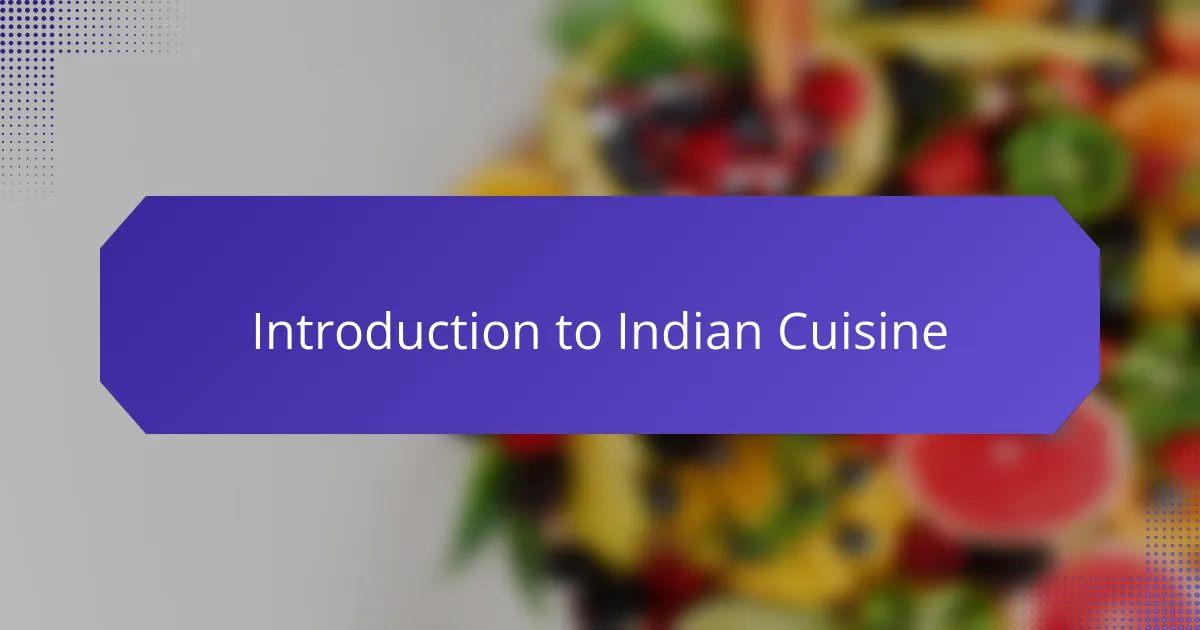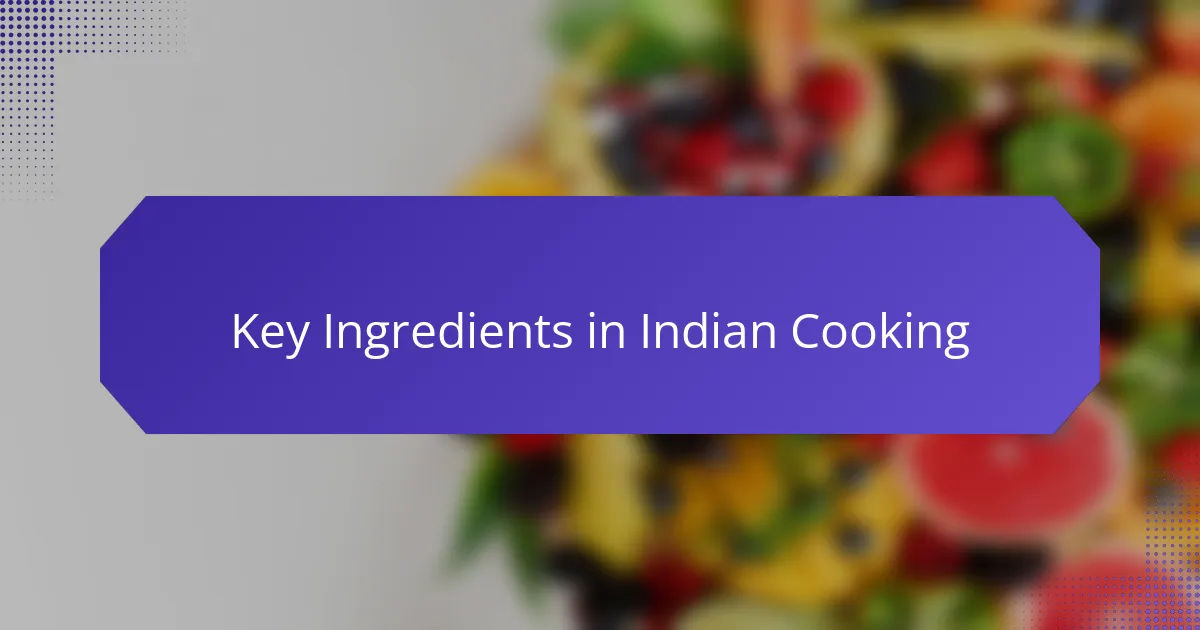Key takeaways
- Cooking challenges, especially with recipes from chefs like Sanjeev Kapoor, enhance culinary skills and foster creativity through experimentation with diverse spices.
- Indian cuisine is rich in flavors, emphasizing the importance of fresh ingredients, including spices, rice, and herbs, which enhance dishes significantly.
- Sharing meals created from these recipes promotes connection and memorable experiences with friends and family, emphasizing the social aspect of cooking.
- Mastering Indian dishes requires patience, attention to detail, and the willingness to adapt recipes, fostering personal expression in the kitchen.

Cooking Challenge Recipe Overview
Cooking challenges are a fantastic way to step outside your culinary comfort zone, and I definitely felt that when I decided to try out Sanjeev Kapoor’s delightful Indian recipes. Each recipe was a little adventure, transporting me to the vibrant streets of India with just a spoonful of spices. Have you ever experienced a dish that instantly changed your mood? That’s what happened to me!
I remember the first time I tackled a classic like Butter Chicken; the aroma filled my kitchen, wrapping me in warmth. There’s something so satisfying about cooking from scratch, especially when you see the transformation of simple ingredients into something so rich and flavorful. It makes you wonder—what’s a dish from your childhood that brings back those comforting memories?
As I experimented with various recipes, I found joy not only in the cooking but in sharing these meals with friends and family. The laughter and conversations that accompanied our dinners created beautiful memories around the table. Have you invited loved ones to taste your culinary experiments? It turns out that cooking is not just about food; it’s about connection, culture, and celebration.

Importance of Cooking Challenges
Cooking challenges offer an exciting way to enhance our culinary skills while stepping outside our comfort zones. When I embarked on my journey to implement Sanjeev Kapoor’s Indian cuisine recipes, I found that these challenges not only strengthened my cooking techniques but also deepened my appreciation for the rich flavors and traditions of Indian food. It was through these challenges that I discovered the joy of experimenting with spices and ingredients I had never used before.
The importance of cooking challenges lies in their ability to inspire creativity and foster confidence. I remember feeling a blend of excitement and nervousness before trying out a new recipe—an experience that always left me with a sense of achievement once I tasted the delicious results. Moreover, such challenges create a wonderful opportunity to connect with friends and family, as sharing meals made from these recipes turned into memorable experiences.
| Aspect | Cooking Challenges |
|---|---|
| Skills Developed | Increased creativity and culinary techniques |
| Emotional Benefits | Boost in confidence and sense of achievement |
| Social Aspect | Opportunities to bond over shared meals |

Introduction to Indian Cuisine
Indian cuisine is a vibrant tapestry of flavors, textures, and aromas that reflects the diverse culture of the country. With its rich history and regional variations, cooking Indian dishes can be both a delightful challenge and a rewarding experience. Personally, I find the process of blending spices exhilarating; it feels like painting on a canvas where each ingredient contributes to a masterpiece.
I remember the first time I tried making a classic dish, like Butter Chicken. The rich, creamy sauce with a hint of spice brought back memories of family dinners. It’s more than just food; it’s about the stories and rituals that accompany each dish.
Here’s a quick comparison of some key elements in Indian cuisine to get you started:
| Element | Details |
|---|---|
| Spices | Essential for flavor; examples include cumin, coriander, and turmeric. |
| Cooking Techniques | Includes methods like sautéing, steaming, and slow-cooking to enhance flavors. |
| Regional Variations | Each state has its own specialties, from the rich curries of North India to the spicy dishes of South India. |

Key Ingredients in Indian Cooking
When I think about the key ingredients in Indian cooking, spices come to mind first. Spices like cumin, coriander, and turmeric are essential; they transform simple dishes into flavor-packed experiences. I vividly remember crushing fresh spices for the first time, inhaling their aroma and feeling like a true chef. Have you ever discovered a spice that completely changed a dish? It’s a beautiful moment in cooking, one that invites exploration.
Another vital ingredient is rice—specifically basmati rice. This long-grained rice has a delicate flavor and lovely aroma that complements many Indian dishes, especially curries. The first time I prepared basmati, I was struck by how much care it required: rinsing, soaking, and cooking just right. The fluffy texture was so satisfying! It made me realize that each component of a meal has its role, and rice is the perfect base for soaking up those rich, flavorful sauces.
Then there are fresh herbs like cilantro and mint, which add a refreshing touch to countless recipes. I often sprinkle chopped cilantro over dishes just before serving, and that vibrant green really enhances the overall presentation. Have you tried finishing a dish with fresh herbs? It’s such a simple step that elevates the meal and makes it feel complete. It’s these key ingredients that help Indian cuisine resonate with depth and celebrate the lively flavors of the culture.

Step by Step Recipe Implementation
When I decided to implement Sanjeev Kapoor’s Indian cuisine, I was thrilled by the thought of bringing the warm flavors of India to my kitchen. One of the most rewarding aspects was realizing how each spice contributes its unique character to the dish. For instance, adding a pinch of cumin can transform a simple dahl into something aromatic and full of depth.
Here’s a step-by-step guide based on my experience:
- Gather Ingredients: Start with fresh spices and vegetables. I remember the vibrant colors of my spices, which immediately set the mood.
- Prep Work: Chop, dice, or marinate your ingredients as per the recipe. This part always feels like a creative process to me.
- Cooking Method: Follow the method carefully, paying attention to timing; overheated oil can ruin a dish. I learned this the hard way once, and it’s a lesson that’s stuck with me.
- Taste as You Go: This is crucial! Adjust seasoning to your liking, and savor the aroma that fills your kitchen.
- Presentation: Finally, serve your dish with flair. I find that a well-plated meal elevates the dining experience, connecting not just to taste but to visual delight.
Implementing these steps not only brings the recipes to life but also transforms cooking into an enjoyable journey for me and my loved ones.

Personal Experience with Sanjeev Kapoor’s Recipes
I remember the excitement I felt when I first opened one of Sanjeev Kapoor’s recipe books. The colorful photos and detailed instructions made everything seem approachable. The moment I tried his Paneer Tikka recipe, I was hooked. The sizzle of marinated paneer on the grill created a mouthwatering aroma that had my family flocking to the kitchen, eager to taste the vibrant flavors of India.
One of my favorite experiences was making Chole Bhature. I had never attempted deep frying before, so it was a mix of anticipation and a bit of fear. The first batch puffed beautifully, and I couldn’t help but smile at my success. Have you ever had that feeling of triumph when a dish turns out better than you imagined? It’s that blend of nerves and joy that makes cooking so rewarding, and Sanjeev Kapoor’s recipes guide you along every step of the way.
As I delved deeper into his dishes, I found that cooking was more than just a task; it became a form of self-expression. I often added my twist to his recipes, letting creativity flow while keeping true to his techniques. For instance, I decided to experiment with a spicy tomato chutney, inspired by his flavors but infused with a bit of my own personality. Have you ever found yourself making a dish uniquely yours? Those adjustments transform you from a cook into a true creator in the kitchen.

Tips for Mastering Indian Dishes
When I first ventured into the world of Indian cuisine, I quickly learned the importance of fresh spices. The aroma of cumin and coriander filling my kitchen was nothing short of enchanting. I realized that investing in whole spices and grinding them just before use truly elevates the flavors, transforming a good dish into something exceptional.
Another key lesson for me was to take my time with layering flavors. I fondly remember my first attempt at a biryani; instead of rushing, I allowed the spices to bloom in hot oil, creating a flavorful base. This patience not only deepens the dish but also fills your kitchen with a remarkable warmth that’s hard to describe.
Tips for Mastering Indian Dishes:
– Use whole spices instead of pre-ground for more vibrant flavors.
– Allow spices to bloom in oil or ghee to enhance their aroma.
– Don’t rush the cooking process; some dishes benefit from slow cooking.
– Experiment with various regional recipes to explore diverse flavors.
– Always taste as you go to adjust seasoning to your preference.


